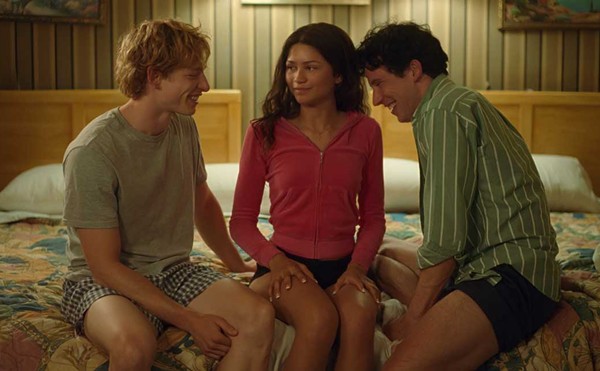John Coltrane
A Love Supreme (Deluxe Edition)
Impulse! Records
A Love Supreme, recorded on Dec. 9, 1964, and released the following February, was tenor saxophonist John Coltrane’s last popular album. A rhythmic and soulful summing up made during his final experimental years, it was fierce without being intimidating, spiritual without being sentimental. As for its avant-garde aspect, it pushed at times, but didn’t cajole; concise, it didn’t challenge the listener’s stamina. Like the Three Bears’ most comfy bed — being neither as frenzied and protracted as his earlier Vanguard sides nor as sprawlingly abstract as his next releases would be — it was just right.
Running just a little over 32 minutes, the recording consists of a four-part suite whose specific religious intent is expressed in an accompanying liner poem. Its lasting appeal arises from its easily grasped emotionalism, alternately exalting and yearning, rough-edged and sensual, with the saxophonist’s classic quartet — McCoy Tyner, piano; Jimmy Garrison, bass; and Elvin Jones, drums — playing at an undeniable peak.
So while it’s arguable as to whether or not a musician with a long, varied and prolific recording career can be said to have one signature album, Ashley Kahn has made an understandable choice. Like his previous examination of Miles Davis’ Kind of Blue, Kahn has zeroed in on a single disc by a protean artist that has managed to resonate with nonjazz fans while at the same time being an undiluted musical statement. Neither Kind of Blue nor A Love Supreme was intentionally commercial. If a musician’s recorded output could be seen as one long book with the individual recordings as chapters, both of these albums would come at the point in the narrative when developments needed to be reiterated and clarified. Miles made his definitive statement on modality; Trane made his on harmonic freedom. What makes these two recordings stand out in their respective creators’ career books is that they’re self-contained chapters — you don’t need to know what’s gone before to get the gist. Context is helpful, but not necessarily necessary.
Kahn makes a great case for the greatness of A Love Supreme without quite explaining why it has reached a large audience — while other “signature” Coltrane albums, such as Giant Steps and Impressions, tend to appeal only to the cognoscenti. He begins by giving us the Coltrane bio, the story of a jazz musician of solid but inauspicious beginnings, of someone who rose through the ranks, who became part of the Philadelphia pool of post-Bird musicians, did an early stint with Dizzy Gillespie (1949-51) and learned his trade playing R&B gigs and countless jam sessions before being plucked from relative obscurity by Miles Davis in 1955.
Trane was someone who worked obsessively on his music, and his innovations seem to have been as much the result of sweat as of inspiration, and his toiling at times gave his soloing an unprecedented density (“sheets of sound” as critic Ira Gitler coined it). And though his multinote style was a perfect foil for Miles’ less-is-more approach, even in the early days his playing made some listeners uncomfortable.
Still, he was recognizably in the hard-bop mode, somewhat eccentric during up-tempo numbers, but still within the mainstream and a ballad player of rare sensitivity. It wasn’t until the early ’60s that he became really controversial, delving into modality (scale-based rather than chord-based improvisations) and playing long, probing pieces that struck the unresponsive ear as merely repetition at an uncomfortable pitch (now the critical phrase of choice became “anti-jazz”). An early modal piece, a reworking of Rodgers and Hammerstein’s “My Favorite Things,” had, with its lilting and trilling soprano sax, become a jazz hit, but moments of widespread audience connection were becoming rarer as Coltrane’s music became increasingly recondite.
By the time A Love Supreme was recorded — in one session and almost one take — the saxophonist had reached a crucial point in his development. The avant-garde was beckoning, and soon he would abandon modal and chordal improvisation for a more amorphous, free approach. In a sense, Supreme could be seen as a bit of unfinished business, both aesthetically and spiritually. In the liner notes, Trane mentions a “spiritual awakening” he experienced in 1957, which is the year he cold turkey-ed his way out of a heroin habit, and the self-penned poem that serves as the music’s program notes — as naked a bit of soul prostration as you’d want to read — suggests someone keeping his side of a metaphysical bargain.
Kahn goes into great detail about the session and the music, keeping the musicological lingo to a minimum. After that, and after dealing with the impact of the album on various jazz and rock musicians, he picks up the bio, covering Trane’s last few years of maximum experimentation until his death from liver cancer at age 40 in 1967. It’s a familiar story by now and, as always, very sad.
Not incidentally, Impulse! Records has issued a two-CD “deluxe” version of A Love Supreme, which is worth having for the first disc alone, a remastering of the original session by the estimable Rudy Van Gelder that makes it the cleanest, most spacious and just flat-out gorgeous version now extant. The second disc is a hodgepodge of related material, starting with a live recording of the only concert performance the quartet gave of the entire piece. Previously available only on a murky bootleg, the sound is now improved considerably, and this roiling and rangy rendition — the two middle movements are slightly longer here than in the complete studio suite — is a showcase for Trane in his ecstatic, driven mode; less concise than on the original, but more visceral, if you can empathize.
Two alternate takes of the suite’s second movement (“Resolution”), one complete and one partial, are followed by what survives of the legendary, never-released sextet recording of Supreme, which turns out to be two takes of the first movement (“Acknowledgement” [sic]). With bassist Art Davis and tenor saxophonist Archie Shepp added to the mix, it offers a glimpse of what might have been, a more wild and wooly offering — though the sound is a little dim and sometimes unstable, and Shepp sounds uncharacteristically tentative. Still, it’s nice to have this little piece of history, finally, even if it just emphasizes that there was no improving on the perfect original.
Richard C. Walls writes about film and music for Metro Times. E-mail him at [email protected].





